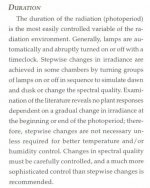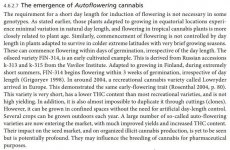Bubbleblower
Member
I would enjoy reading anything you have to share.
Personally I am much more interested in what you, Shaggy or Ornamental have to share. You are smokers like me, open minded and not here for donations.
Mmm, you'd suspect they would. Still not a fan of using FR leds though as the footprint would be very small and the light possibly not strong enough.What about far red led's putting out far red after they are off?
May be that is why this is not true at all:
This is, same as what Only Ornamental said:Shaggy, "End-of-day treatment" is also a common use for far-red LEDs
The “critical period” is after the lights go out.an intense exposure to far red light at the start of the night reduces the dark requirement by 2 hours (I suspect that's why HPS does so well).

Very much.Is timing of exposure important?
I just wonder if we are over saturating our plants in the morning and in the evening.
Midday depression:
http://books.google.nl/books?id=0_3XqlcKPpwC&pg=PA288&lpg=PA288&dq=midday+depression+plants&source=bl&ots=yQGRkFjI20&sig=VTLAzHKxWoVVBmlRXj6IOOIOsYs&hl=nl&sa=X&ei=0-ZIVM78HIm-PbDngPgC&ved=0CCEQ6AEwAA#v=onepage&q=midday%20depression%20plants&f=false








